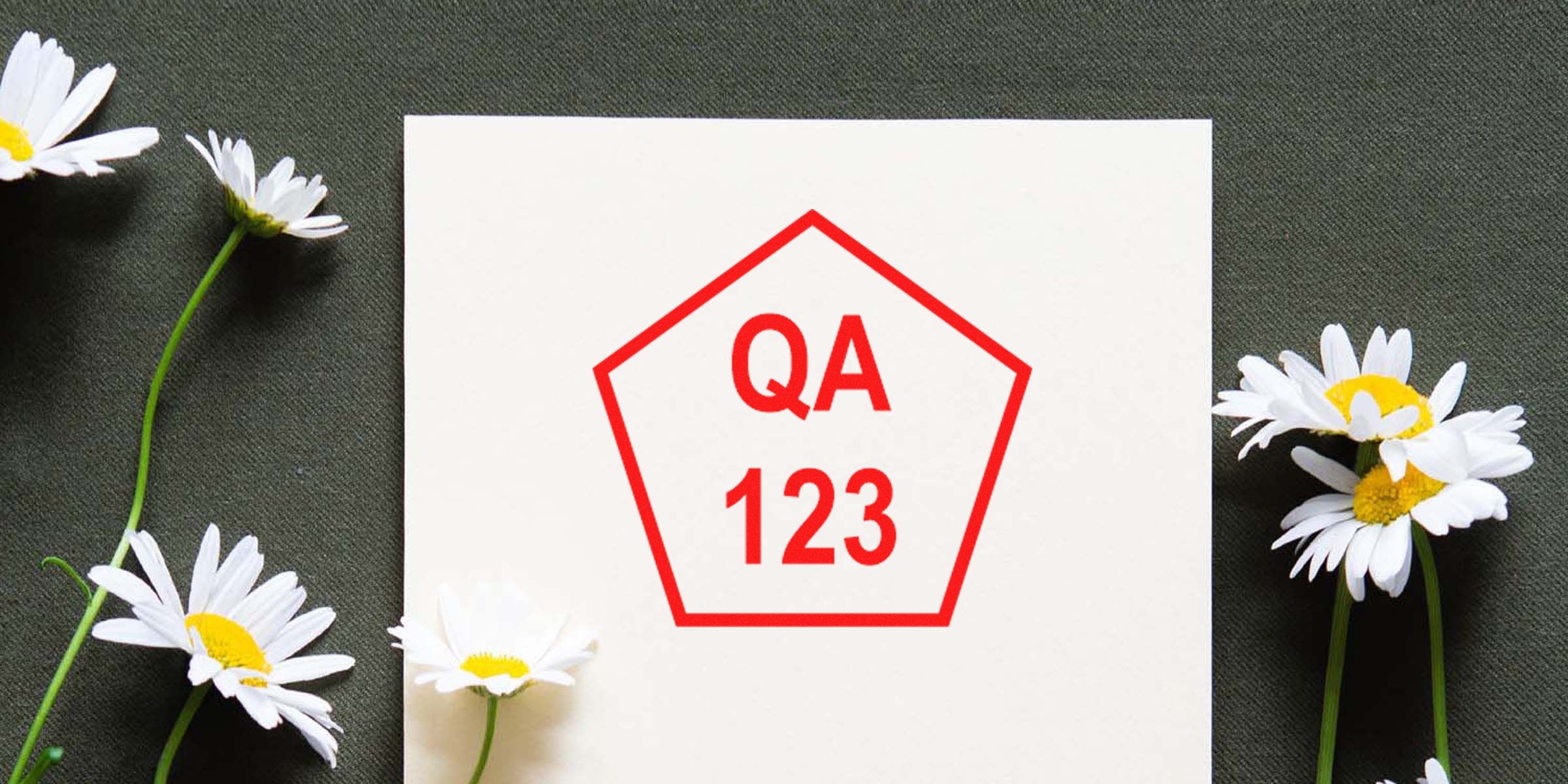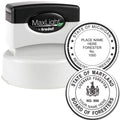Whether you’re a small business owner or you handle quality control on a busy production line, you’ve probably heard about the importance of a quality inspection stamp. This handy tool helps you track which items have passed inspection, who approved them, and when. But if you’ve never purchased one before, or you’re not sure what features to look for, it can be tricky to choose the best option. That’s where this guide comes in. I’ll walk you through the different types of inspection stamps, important considerations, and tips on personalizing them, so you can confidently pick a stamp that meets your needs.
Recognize The Purpose
A quality inspection stamp is more than just a piece of rubber or self-inking device. It’s a quick, visible record of an item’s approval status. You use it to mark whether a part, product, or document has passed a quality check, ensuring only properly vetted items move forward.
- Speeds up your workflow. A simple stamp means no hunting for pens or signing each item yourself.
- Tracks responsibility. Each stamp can be unique to a person or department, so you know who signed off on what.
- Improves efficiency. Consistent stamping procedures help teams work faster and reduce errors.
Sometimes called a QA or QC stamp, this little tool is a powerful organizational ally when you want a clear and immediate record of what’s been inspected.
Know Their Benefits
A strong inspection process keeps your business operations running smoothly, and a stamp is part of that engine. You might be thinking, “But can’t I just jot my initials with a pen?” You could, but here’s why a dedicated stamp is superior:
Consistency
Using a stamp removes the possibility of messy or illegible signatures. Every approval mark looks the same, reassuring customers or teammates that you follow a professional, uniform process.Accountability
When each team member has their own quality inspection stamp, it’s easy to trace issues—or give praise—to the right individual. You don’t waste time deciphering handwriting or figuring out whose initials belong to which shift.Professional Appearance
Whether you’re approving packages for shipment or signifying QC on official documents, a neat stamped mark creates a better impression than hurried scribbles.
Whenever you want your brand or process to stand out, a custom inspection stamp helps you command a sense of reliability. It’s a small detail, but these subtle differences can tell customers you really know your stuff.
Consider Key Features
Not all stamps are created equal, and rushing into a purchase might leave you with something that quickly wears out or isn’t quite the right shape or size. Paying attention to the following points goes a long way toward an investment that truly serves you.
Size And Shape
You want a stamp that’s comfortably sized for both storage and usage. If you handle large documents or pallets, a bigger marking surface might work best so it’s easily visible. If you’re stamping small parts, however, a more compact design fits snugly without crowding the item.
- Small stamp (under 1 inch). Ideal for little packaging labels, small boxes, or subtle approval marks.
- Medium stamp (1–2 inches). Great for everyday office use and smaller signage.
- Large stamp (over 2 inches). Best for big items, such as crates, shipping cartons, or large production materials.
Material And Durability
Inspection stamps come in different materials, usually rubber or polymer, each offering varying degrees of durability. If you’re stamping dozens of items daily, you need a tough device that reliably lasts a long time. Consider:
- Rubber or polymer surface. A typical choice for quality inspection stamps, as they’re easy to clean and refill.
- Metal or plastic handle. Metal handles are sturdy for high-volume environments, while plastic handles are lighter and can be more cost-effective.
Ink Type And Color
Choosing a suitable ink matters for clarity and longevity. You want ink that doesn’t fade quickly or smear off with a bit of friction. Also, some industries have strict guidelines on ink color, so make sure you match any relevant standards.
- Water-based ink. Dries fast, easy to clean with water, but might not resist smudges as well if you’re stamping slick surfaces.
- Oil-based ink. Often more robust against smudges and water exposure, but it can be trickier to clean off stamps.
- Specialty ink (quick-dry, permanent). Perfect when you handle materials in humid or demanding conditions, such as metal parts that require quick handling.
Customization Options
A crucial aspect of a quality inspection stamp is personalization. The more specific your stamp, the easier it is to trace tasks and confirm authenticity. Some folks like a date or initials, while others may want a company name or logo included.
- Text-based. A straightforward design, often with lines like “QA Approved” or “QC Passed.”
- Numbered or dated. Automatically keeps track of your inspection date or record.
- Logo or brand. Incorporate a graphic, so every item you approve clearly represents your organization.
- Combination of text and logo. This is the top-tier choice for many, neatly pairing identity with messaging.
Design Your Perfect Stamp
So you know you need size, durability, and the right ink. Now let’s focus on creating a design that accurately represents you or your team. This part can be a lot of fun. You get to pick the text, the font style, and the layout that best illustrates your brand’s character.
- Plan your text. Something short and to the point, for example, “INSPECTED BY JANE” or “QC PASS.”
- Consider readability. If your stamp has small lettering or fancy fonts, double-check that it’s easy to read once stamped.
- Position your logo. If you decide to include a graphic, place it in a prominent spot. For instance, top-center is usually eye-catching.
When you’re looking to highlight your brand visually, remember that ESS can make any design happen. If you have a specific layout in mind, they’ll help you transform it into a functional stamp. And if you need a custom imprint with your brand identity, explore their offer for a company logo inspection stamp. It’s a straightforward way to give your quality verification mark a professional edge.
How ESS Helps You
Since 1964, ESS has been a family-owned and operated business specializing in custom stamps, inspection stamps, QA stamps, and QC stamps. They’re known for:
- Top-notch quality. They’re committed to ensuring your stamp is built from durable materials.
- Excellent customer service. If you have questions or need help choosing the right ink type, they’ve got your back.
- Very fast turnaround. In a pinch? You can get your stamp delivered quickly without sacrificing workmanship.
Working with a family-run company that’s been perfecting stamps for decades means you’re getting both experience and passion. This combination often shines through in the final product, ensuring you have a tool that works, lasts, and looks fantastic.
Maintain And Store Properly
Just when you think you’re all set, don’t forget stamp upkeep. A quality inspection stamp needs a little TLC to remain crisp and effective, especially if it’s used frequently. Here’s how to keep it performing at its best:
- Clean the stamp face. After a heavy stamping session, gently wipe away any built-up ink residue with a soft, damp cloth.
- Store upright or in a case. A dedicated storage compartment protects the stamping surface from dust and direct sunlight.
- Re-ink correctly. If you’re using a self-inking stamp, replace or refill the ink pad with the right ink type. For a rubber stamp, always use a suitable ink to prevent the rubber from drying or cracking.
- Inspect regularly. Make sure letters or numbers aren’t wearing down. If you see uneven stamping or blurry marks, it might be time for a new surface or a refresh.
These simple actions take just a few moments each week, and they help your inspection stamp maintain a clear, professional imprint every time.
Common Mistakes To Avoid
While buying and using a quality inspection stamp is fairly straightforward, there are a few pitfalls you might stumble into if you’re not prepared. Save yourself some hassle by steering clear of these errors:
Going Too Cheap
Seeing a discount deal can be tempting, but a flimsy stamp will become frustrating fast. Inferior materials wear out quickly, and you’ll have to reorder far sooner than if you’d chosen a sturdier alternative from the get-go.Overly Complex Layout
Fancy fonts and too much text might look pretty in digital form, but stamped impressions can muddle those details. Keep it streamlined to ensure clear legibility.Incorrect Ink Selection
Using water-based ink on glossy surfaces? You might end up with smears or faint marks. Always confirm your ink suits the material you’re stamping.Not Factoring Size
A stamp that’s too big creates half off-the-mark prints. One that’s too tiny can be overlooked or unreadable. Measure your typical stamping area ahead of time.Forgetting Brand Identity
If your inspection stamp is a big part of how you authenticate or brand your products, don’t hide that logo. A little brand flair helps your stamp stand out in a sea of plain red “Approved” badges.
By learning from these common oversights, you ensure a smooth purchasing experience and a final product that truly helps your workflow.
Summary And Next Steps
Investing in a quality inspection stamp can transform how you track approvals and keep your business flowing. Once you’ve decided on the size, shape, and customization for your stamp, it’s important to store and maintain the device properly so it remains a reliable tool for months, even years, to come.
If you want a professional-looking design that includes your company logo, or if you just want a super-simple text-based stamp, consider working with ESS to get exactly what you envision. They’ll guide you from concept to final product, deliver fast, and stand by the quality because they’ve been doing this successfully for over half a century. Once you have that stamp in hand, you’ll wonder how you ever got by without it.
Frequently Asked Questions
Can I Change The Ink Color Later?
Yes. Many stamps, particularly self-inking models, allow for ink pad replacements. If you want to switch from black to blue, just be sure to clean any previous ink residue first.How Long Does A Stamp Typically Last?
With regular care—cleaning after use and proper storage—it can last for thousands of impressions. Rubber or polymer stamps need replacing eventually, but durable models can keep going for years.Do Inspection Stamps Work On All Surfaces?
Generally, they work best on paper, cardboard, or other porous materials. If you’re stamping glazed or metal surfaces, you may need specialty inks that dry quickly and resist smudging.Is A Logo Stamp Worth The Extra Cost?
If branding matters to you, absolutely. A logo helps reinforce your company identity, plus it looks more professional. If you produce goods for customers, a unique stamp can convey that each item is officially approved.How Quickly Can I Get A Custom Stamp From ESS?
ESS is known for a very fast turnaround. Typically, they’ll fulfill your order in just a few business days, although larger or more detailed designs might take a bit longer.
Congratulations on boosting your efficiency with an inspection stamp. You’re now set to pick the right size, materials, and features to keep your quality process running smoothly. If you’re ready to add a professional edge or a dash of personality to your next order, ESS is standing by to help you create precisely the tool you need.


















